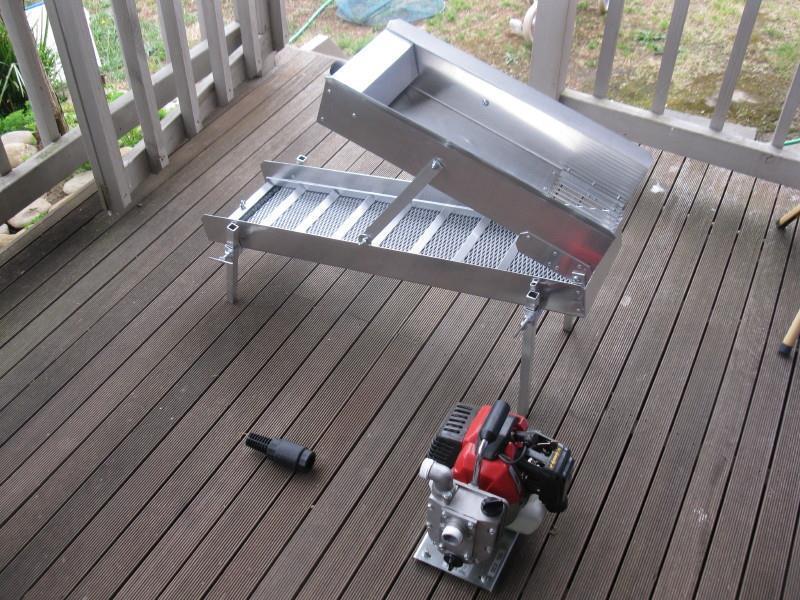i saw a guy struggling to get camlocks into stiff suction hose and thought i would mention the technique we have used in mines and quarries
The hose is put in the ground , put grease or vaseline on the hose tail , stick it into the end of the hose , put a block of 4 x 2 timber hardwood against the camlock and then stand on the hose while you bash the camlock in with a 14 lb sledgehammer
a lot of camlocks ARE very tight to get in to thick walled suction hose , and that is the most reliable method if you dont have a hose press bench
.
for the record , a hose press bench has sets of half clamps that hold the hose while a hydraulic press pushes the camlock into the hose.
If youre doing more than one hose you might go to the effort of taking two 4 x 4 timbers , drill a hole in between them slightly smaller than your hose and bolt the timbers to a bench for a hose clamp then do the same method as above with wood block and sledgehammer.
I have done this on hoses up to 4 inch , anything bigger i pay the hose guy to do them.
The hose is put in the ground , put grease or vaseline on the hose tail , stick it into the end of the hose , put a block of 4 x 2 timber hardwood against the camlock and then stand on the hose while you bash the camlock in with a 14 lb sledgehammer
a lot of camlocks ARE very tight to get in to thick walled suction hose , and that is the most reliable method if you dont have a hose press bench
.
for the record , a hose press bench has sets of half clamps that hold the hose while a hydraulic press pushes the camlock into the hose.
If youre doing more than one hose you might go to the effort of taking two 4 x 4 timbers , drill a hole in between them slightly smaller than your hose and bolt the timbers to a bench for a hose clamp then do the same method as above with wood block and sledgehammer.
I have done this on hoses up to 4 inch , anything bigger i pay the hose guy to do them.




